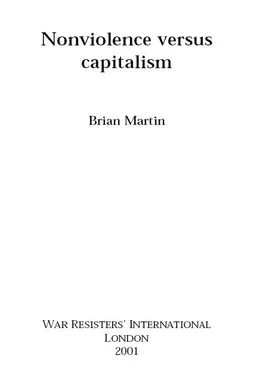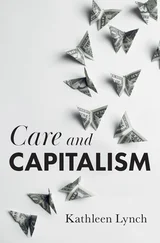One of the driving forces behind capitalism is ever-increasing consumption. If people always want better clothes, larger houses, fancier cars, more sophisticated computer software, and any number of other goods and services, there are ample opportunities for making money by providing for these desires. Much advertising is designed to make people feel inadequate and stimulate them to buy products to overcome this perceived inadequacy, whether it is soft drinks, kitchen cleaning products or holiday cruises. If most people want more than they already have, they are more likely to work hard in order to make money to spend.
However, if lots of people decided that they are satisfied with a few basic, long-lasting possessions, the economy would suffer. The voluntary simplicity movement aims at cutting back on unnecessary consumption. [6] . The Simple Living Collective, American Friends Service Committee, San Francisco, Taking Charge: Achieving Personal and Political Change through Simple Living (New York: Bantam, 1977).
Instead of seeking a large house or apartment, a lesser scale is preferred.
Instead of two or three cars for a family, there is only one, or perhaps none with bicycles instead.
Instead of buying lots of new clothing, a smaller amount of clothing is kept, which may be obtained second-hand.
Instead of purchasing large collections of books and recordings, libraries are used instead.
There is a great flexibility in the ideal of simplicity. It might mean keeping only a very few possessions, or just a reduction from the norm to something a bit less.
The term “voluntary” is important. This is not poverty that is forced on people because they have no option. Rather, it is a choice to live simply, without the usual array of appliances and services.
There are various motivations for voluntary simplicity, including concern about the environmental impacts of production, a personal preference for an uncluttered and less hectic lifestyle, an escape from the treadmill of working to earn money in order to consume, an expression of solidarity with those who have less, and an unwillingness to support the ever-expanding capitalist system.
For millennia, some individuals have opted for voluntary simplicity, which is always relative to current standards of consumption. It takes on special significance in affluent societies and in affluent subcultures, since it challenges the prevailing ethos of consuming as much as one can afford. Voluntary simplicity gained some visibility in western countries in the 1970s. It remains a preferred option for some individuals and in some communities, but has not become a major movement.
1. Does the campaign help to
• undermine the violent underpinnings of capitalism, or
• undermine the legitimacy of capitalism, or
• build a nonviolent alternative to capitalism?
Voluntary simplicity undermines the legitimacy of capitalism as a system of ever-increasing production and consumption. It is a threat, then, to the conventional picture of capitalism. Of course, capitalism does not always work well, and in periods of depression there is drastically reduced output, which may cause widespread “involuntary simplicity.”
Voluntary simplicity contributes to building nonviolent alternatives to capitalism, in as much as these alternatives are based on satisfying needs rather than pandering to unlimited wants. This applies especially to sarvodaya (see chapter 5). Establishing a culture where people are modest and realistic about their needs is a helpful step towards an economy based on cooperation and helping those with greatest needs.
2. Is the campaign participatory?
Participants are those who opt for voluntary simplicity. There might also be some who advocate voluntary simplicity but, for the time being, do not participate as fully as they might like.
3. Are the campaign’s goals built in to its methods?
Yes. Voluntary simplicity is an ideal example of “living the alternative.”
4. Is the campaign resistant to cooption?
Voluntary simplicity can be marketed as a consumer option, with special products designed for those so inclined. However, this form of cooption has not been prominent compared to tempting people to become conventional consumers. Advertising becomes ever more sophisticated in targeting insecurities and selling goods through the promise of fulfilling fantasies. Consumerism is ever more convenient. Many goods are produced so that, when they break down, it is cheaper and easier to buy new ones rather than undertake repairs. As prices drop and product convenience increases, voluntary simplicity may seem a pointless form of self-deprivation. In addition to this, the influence of peer pressure is very great. It can be extremely difficult to be an isolated individual who practises voluntary simplicity, living among others who do not question consumer culture. For this reason, voluntary simplicity thrives in communities of like-minded individuals. It can even become a matter of pride and prestige to be seen to live a simple life.
* * *
Voluntary simplicity can be taken up without much obstruction: state coercion is unlikely to be used to force people to consume! It is part of a constructive programme that mimics the desired alternative, namely a system which caters for people’s needs but not their greed. The greatest weakness of voluntary simplicity as a strategy is its susceptibility to cooption. The promoters of consumption have developed sophisticated means of enticing people to join the consumer society. If a few people decide to opt out for a simpler lifestyle, that is not a fundamental threat to consumerism. Voluntary simplicity would be a greater threat if it became a popular option and was linked to other strategies for directly challenging and replacing capitalism.
Turning economic alternatives into strategies is a powerful approach. The biggest challenge is to do this on a significant scale. It is comparatively easy to take small initiatives, but these are also easy to marginalise or coopt.
For an individual to adopt voluntary simplicity is a useful step. A much bigger challenge is to turn voluntary simplicity into a social movement, with so many converts that it is mutually reinforcing.
Setting up a small cooperative enterprise may not be too hard though, to be sure, there can be great difficulties. The larger challenge is to set up a network of cooperatives so that they support each other, rather than having to battle for survival alone in a hostile environment.
Promoting sarvodaya in individual villages in India and Sri Lanka is one thing. It is a much greater challenge to turn this into a global movement.
It is possible to become a voluntaryist and to survive, as much as possible, through voluntary economic exchange while refusing any dealings involving the government. This is difficult enough. To make this an attractive option for lots of people is much more difficult.
Thus, whatever nonviolent alternative is envisaged, the biggest challenge is to develop it beyond local initiatives.
A nonviolence strategy against capitalism needs to be built on nonviolent analysis, nonviolent goals and nonviolent methods. The analysis of capitalism should be from a nonviolence perspective, with special attention to the violent foundations of the system. The ultimate goal is a nonviolent alternative to capitalism, in which there is no organised violence. The methods used to move towards the goal are the familiar techniques of nonviolent action.
Many courageous and committed people have undertaken nonviolent campaigns to challenge capitalism or aspects of it. However, seldom has this been linked to any overall strategy for nonviolent transformation of capitalism. Most nonviolent analysis has focussed on cases of overt repression, aggression or oppression, such as dictatorship, military attack and racial discrimination. The exercise of power in capitalism is more multilayered. Therefore an analysis of the dynamics of capitalism, from a nonviolent perspective, is absolutely vital for developing a nonviolence strategy.
Читать дальше

![Brian Jacques - Martin the Warrior [Redwall 6]](/books/128385/brian-jacques-martin-the-warrior-redwall-6-thumb.webp)










